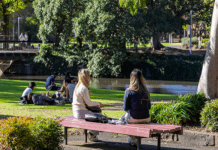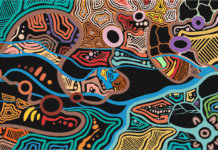Pride Week is more than just a celebration—it’s an opportunity to address and dismantle the myths and misconceptions surrounding sex and gender diversity that disproportionally impact trans and intersex people.
At La Trobe University, we’re committed to fostering an inclusive and equitable environment where diversity is not just accepted; but celebrated. As we move through Pride Week, we encourage allies (or those who are ally-curious!) to reflect on these issues and take actions to help us build more respectful and equitable communities.
What’s the Difference Between Sex and Gender?
The Australian Government Guidelines on the Recognition of Sex and Gender states that ‘although sex and gender are conceptually distinct, these terms are commonly used interchangeably, including in legislation’. This is also true of wider society.
Sex usually refers to biological categories – like male or female – which are determined by physical traits like genitalia, chromosomes, hormones, and body anatomy.
Gender is usually used as a broader social category involving identity, roles, and cultural expectations. It reflects how individuals express themselves and navigate societal norms.
These categories are not always clear-cut. Not everyone fits neatly into male or female sex categories, and gender does not always align with presumed sex at birth. This is where the concept of cisgenderism comes into play — the harmful belief that presumed sex at birth is binary, indisputable, and wholly dictates a person’s gender.
For a deeper dive into the historical and contextual definitions, check out this article What are sex and gender anyway? on TransHub.
What does intersex mean?
Intersex is an identity commonly used by people who have innate sex characteristics that don’t easily fit into male/female sex categories. Intersex is not a gender, but a description. Just like the rest of humanity, intersex people may be men, women, or a non-binary gender. Learn more and watch informative videos through the Intersex for Allies page featured on Intersex Human Rights Australia.
What does Trans mean?
Trans or transgender is an umbrella term that refers to someone whose gender does not align with their presumed gender at birth. Trans people may be binary (e.g. a trans man or a trans woman) or non-binary (e.g. gender-fluid or genderqueer). Trans is not a gender, but a description e.g., A trans woman, a transgender person.
You can learn more from this What is Trans? article on TransHub.
What does cis mean?
Cis or cisgender describes someone whose gender aligns with their presumed gender at birth. Like the other terms, cis is a description – not a gender. Cis is the appropriate term to use when discussing people who are not trans and replaces terms like biological woman or biological man. These terms perpetuate harmful myths that sex and gender categories are binary and undeniable facts instead of a spectrum of diverse characteristics and identities.
Understanding Sex and Gender Diversity
People of all identities—regardless of their gender or sex—can face harassment and marginalisation when stepping outside of rigid and binary gender norms. By celebrating how diversity brings richness to our society, we can help reduce stigma and create a safer, more respectful environment for everyone.
Every student at La Trobe has the right to:
- Freely use any La Trobe toilet, sport, or changing facilities when these are normally available to students.
- Wear clothing that others may not associate with their presumed gender at birth (provided it meets other clothing requirements, such as appropriate footwear in labs).
- Request others call them by a nickname or a different than the one recorded on student systems and expect it to be used.
- Request that others use specific pronouns for them and expect them to be used.
- Study in an environment which is free from unacceptable behaviour, including discrimination, harassment, bullying, vilification, victimisation and violence.
Various legislation protects Trans. For more information, see:
- The LGBTIQ Rights page by the Victorian Equal Opportunity & Human rights Commission (VEOHRC)
- The Respectful Behaviour and Culture Module available to all students on LMS
- La Trobe University Sport – Our Commitment to Open Participation
- La Trobe Charter of Student Rights and Responsibilities
Supporting equitable treatment of those with sex and gender diversity
The Student Charter expects all students to take an active role in contributing to an environment that is safe and free from discrimination, harassment, vilification and victimisation.
Some ways you can take action include:
- Watch and share the Victorian government’s newest campaign, The Unsaid Says a Lot, which shows small but meaningful actions people can take to help trans people feel safe and welcome.
- Get advice from the Guide for Conversations About Trans Justice and start practicing on your friends and family.
- Read and affirm the Darlington Statement, a joint consensus statement by Australian and Aotearoa/New Zealand intersex organisations.
Get support at La Trobe
Have you witnessed or experienced cocnerning behaviour?
Throughout your time at La Trobe University, if you experience or witness concerning, threatening, inappropriate or uncomfortable behaviour, including sexual harm or feel that any member of the La Trobe community falls short of the expectations detailed in the La Trobe Charter of Student Rights and Responsibilities, you can contact the Safer Community team or lodge a complaint with the Student Complaints Office.















